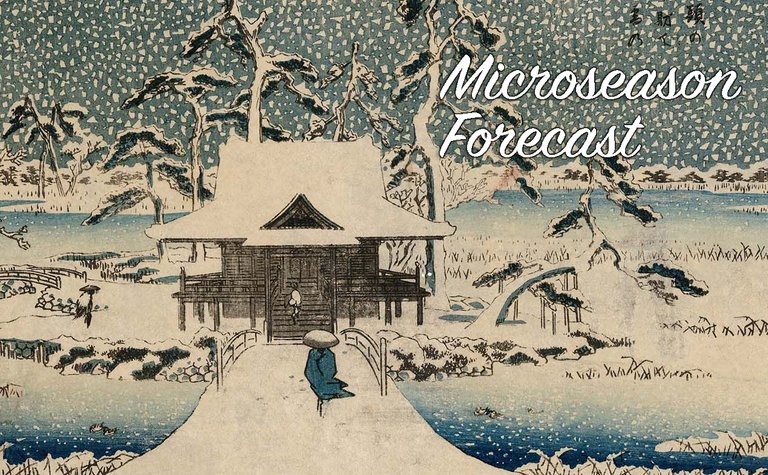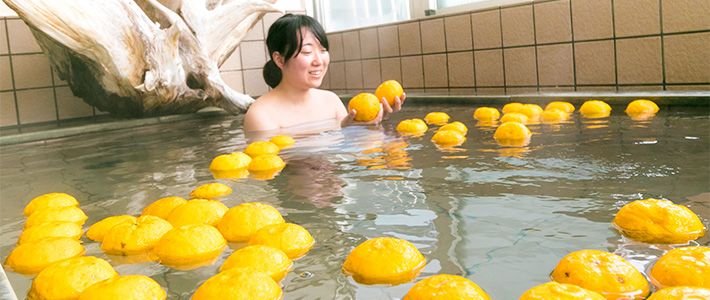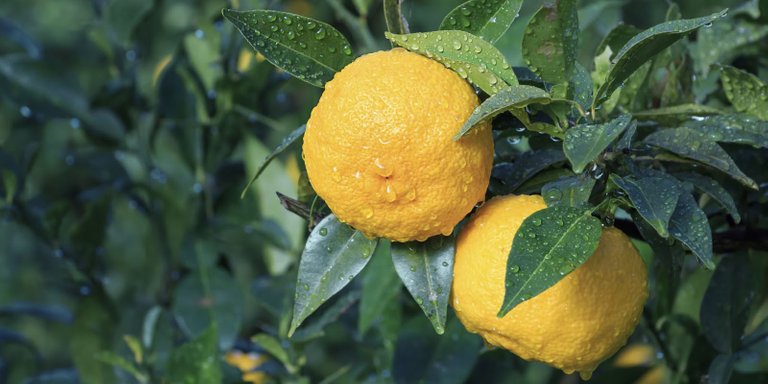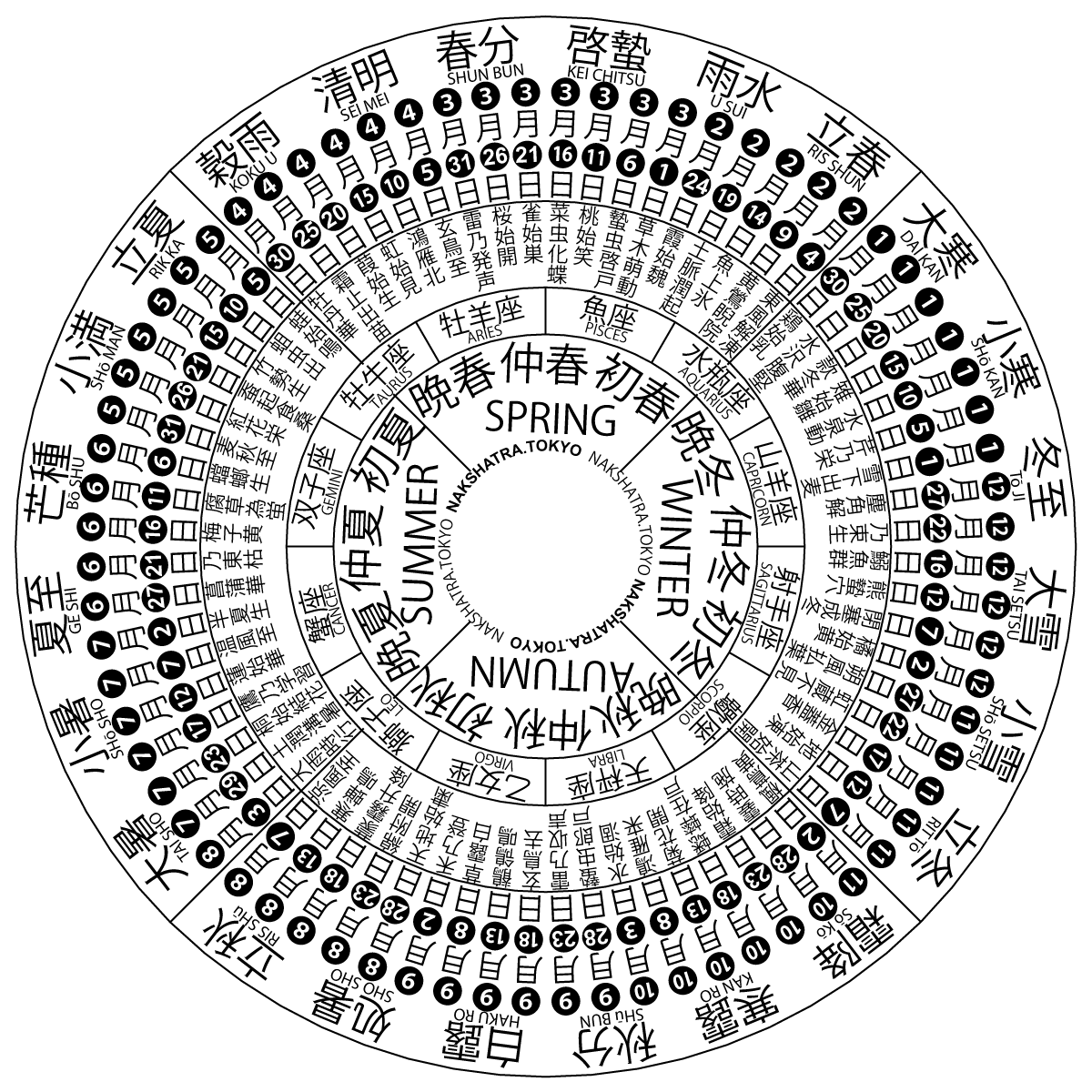Microseason Forecast for Dec 22 - Dec 26 ~ Notes from the Japanese Almanac

Today begins a new microseason! If this is your first time joining us, scroll down past the forecast to read about what exactly a microseason is. For the rest of you, let’s jump in!
The Current Solar Term: tōji
Today, Dec 22, begins tōji (冬至), the 22nd solar term (節気, sekki), which means Winter Solstice.
It’s the shortest day of the year. It’s all up from here!
While this is considered the start of winter in Western reckoning, in Japan’s traditional view it is the middle of winter.
tōji lasts until Jan 4.
The Current Microseason: self-heal sprouts
Today, Dec 22, begins 乃東生, the 64 microseason (候, kō) which is read Natsukarekusa Jōzu and means self-heal sprouts. This is the first microseason of tōji, which is itself the NUMBER solar term of winter.
The Self-heal is the common name for the Prunella, or utsubogusa in Japanese. It is also known as natsukarekusa in Japanese, or summer-withering grass, because it looks that way when summer gets here.
The Self-heal is one of the few blooming plants in winter when everything else seems to be dying, and for that reason alone it was always much beloved as a sign of hope for warmer weather to come, a perhaps much more hopeful sign back in the days before global warming when winter was much colder (and thus bleaker) than it is today.

Seasonal Fruit: Yuzu
Yuzu are similar to lemons or sour oranges. They resemble mandarin oranges in size, but are yellow and sour. They usually aren’t eaten by themselves, but are used as an additive to many things. Many farmers would traditionally also use it to make a yuzu sake, which is quite good I can assure you.
At this time, it is common to take yuzu baths, called yuzuyu (柚子湯). As many of you know, hot baths are an extremely common thing in Japan and much beloved by everyone. On this day especially either the entire fruit or just the peel will be thrown in the bath, or sometimes one cut up to let the yuzu juice (full of vitamin c) mix with the water. Besides the vitamin C, the skin contains nomilin which is an essential oil said to promote better circulation.
Many public bathhouses do this, but many to most people probably also do it privately in their homes. It is said to be good luck and also to prevent colds. A silly superstition perhaps, but a harmless one (and fun one). Regardless of any real health benefit, the aroma while taking the bath is really pleasant.
The practice dates from the Edo period (1603–1867) but it has roots in the older practice of adding seasonal plants to baths for medical purposes or just general enjoyment which dates back to the Asuka Period (593–710).

Here is a haiku for this microseason:
yūzora kara yuzu no hitotsu o morau
I pick one yuzu
—Santōka
Was he picking one to eat or to use in his bath later? Perhaps the latter, but I don’t know the date of this haiku so I can’t be sure.
Yuzu by itself is a kigo for late autumn, but yuzu bath (柚子湯) is a kigo for mid-winter, so if we are implying a bath we can also use yuzu alone for a winter kigo.

Will move this info to another post one of these days, but for now, briefly:
- Each month has two seasons, called solar terms (節気, sekki), giving us a total of 24 seasons. This gives the system its name, the 24 Sekki (二十四節気). I usually refer to this entire system as The Japanese Almanac. It is more than a little similar to the American Farmer’s Almanac.
- Each of these 24 seasons is further subdivided three more times, giving us a grand total of 72 seasons, or microseasons (候, kō).
- Each microseason is about 5 days. With time periods so short, they can get pretty specific about what in nature we might expect to be happening around now.
- The system was originally from China, but it was reformatted during the Edo Era (1603–1868) to fit better with Japan’s climate. I find it also fits fairly well with much of the Midwest in the Eastern half of the US. But if you live in a different area, your milage may vary.
- The entire system is based on the equinoxes and solstices, so it is fluid and the exact dates will vary by a day or two from year to year. Luckily there are a great many Japanese sources that do the astrological computations for us and tell us exactly when each one starts and ends every year.

The next microseason starts on Dec 27. See you then for the next forecast!
Your content has been voted as a part of Encouragement program. Keep up the good work!
Use Ecency daily to boost your growth on platform!
Support Ecency
Vote for new Proposal
Delegate HP and earn more
This post has received a 100.00% upvote from @fambalam! Join thealliance community to get whitelisted for delegation to this community service.